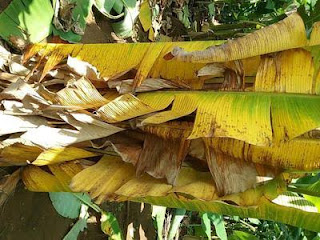 |
| New Breakthrough Offers Hope in the Fight Against Panama Disease Ravaging Banana Crops for 30 Years Image credit: Plantix |
The Threat of Panama Disease: A Global Crisis for Bananas
For the past three decades, a devastating pandemic has threatened the world's banana crops. The culprit is a fungus known as Fusarium oxysporum f. sp. cubense, responsible for a condition called Panama disease or Fusarium Wilt. This pathogen attacks the banana plants' vascular system, leading to yellowing leaves and eventually causing the plants to die.
The Historical Impact: From Gros Michel to Cavendish
The disease was first identified in the 1870s and by the 1950s had spread to banana-growing regions worldwide. This led to the near-extinction of the Gros Michel banana variety, once the most popular type of banana. As a result, cultivators switched to the Cavendish variety, which became the global standard for bananas. However, the relief was short-lived, as Panama disease resurfaced in 1994 in Taiwan, this time threatening Cavendish bananas on a global scale.
A New Discovery: Different Origins and New Strategies
There is, however, a glimmer of hope. In a study recently published in Nature Microbiology, a team of researchers, including biochemistry professor Li-Jun Ma from UMass Amherst, revealed that the strain of Fusarium oxysporum affecting Cavendish bananas, known as Tropical Race 4 (TR4), has a different evolutionary origin than the strain that wiped out Gros Michel bananas. By sequencing and comparing the genes of 36 strains of Fusarium fungi, the researchers discovered that TR4 did not evolve from the strain that devastated Gros Michel bananas.
Promising Research: Reducing the Virulence of TR4
One of the study's most promising findings is that TR4's genome contains accessory genes linked to the production of nitric oxide, which appears to be a critical factor in the fungus's virulence. When the researchers disabled the genes responsible for nitric oxide production, TR4's virulence was significantly reduced. According to Yong Zhang, a former UMass Amherst doctoral student who led the research, this discovery "opens up many strategic avenues to mitigate, or even control, the spread of TR4."
The Importance of Diversification: A Cautionary Note
Despite this breakthrough, Ma cautioned that relying solely on the Cavendish variety is risky. He emphasized the importance of diversifying banana crops to better protect against pathogens. This strategy could be crucial in ensuring the long-term survival of banana cultivation.
Conclusion: A Ray of Hope for the Future of Bananas
While this new research offers hope for the Cavendish banana, it also underscores the need for a more resilient approach to banana farming. By exploring new strategies and diversifying crops, growers can better safeguard against future threats and ensure the continued availability of this beloved fruit.










0 Comments